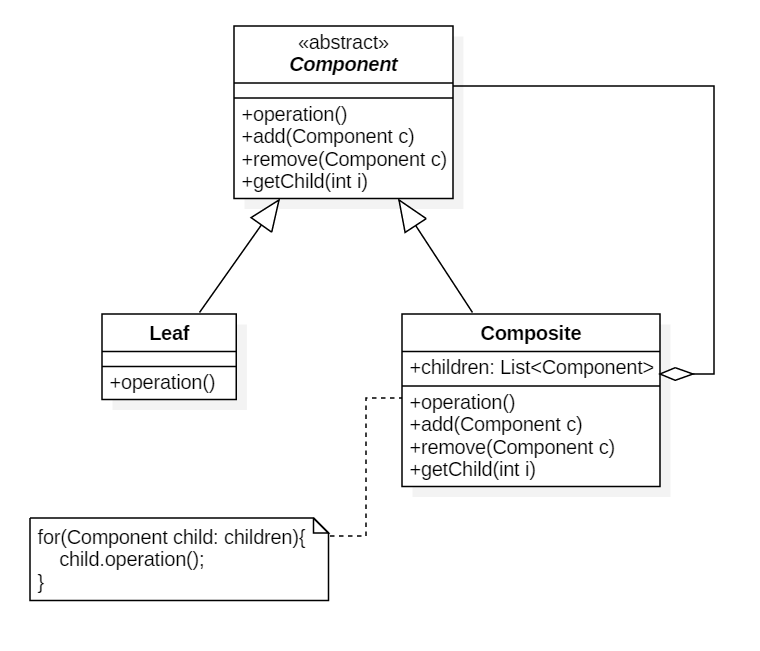树形结构的处理
组合模式(Composite Pattern):组合多个对象形成树形结构以表示具有“整体-部分”的层次结构。组合模式对单个对象(叶子对象)和组合对象(容器对象)的使用具有一致性。
- 优点
- 组合模式可以清楚定义分层次的复杂对象。
- 组合模式为树形结构的面向对象实现提供了一种灵活的解决方案,通过叶子对象和容器对象的递归组合。
- 缺点
- 在增加新构建时很难对容器中的构建类型进行限制。
- 适用场景
- 整体和部分的层次结构。

|
|
|
|
|
|
树形结构的处理
组合模式(Composite Pattern):组合多个对象形成树形结构以表示具有“整体-部分”的层次结构。组合模式对单个对象(叶子对象)和组合对象(容器对象)的使用具有一致性。

|
|
|
|
|
|